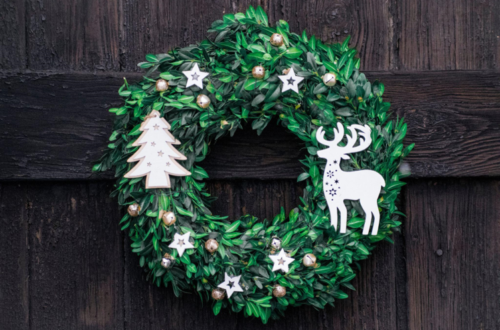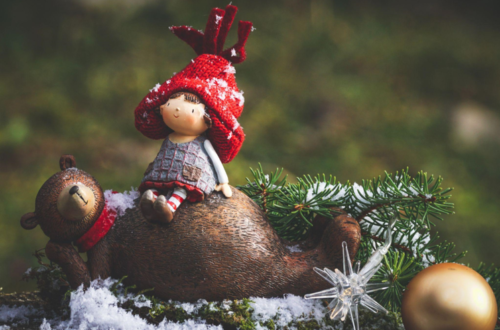
A King, a Cake, a Magic Bean, and Other Twelfth-Night (Holiday) Customs
The Legend of the King Cake: A Twelfth-Night Tradition with a Surprise Inside
Have you ever heard of the legend where the man who finds the bean in the cake gets to be king for the evening? That’s only one of the many customs and traditions connected with theTwelfth Night Holiday. The National Museum of American History Library contains a number of resources relating to Twelfth Night, including the Dennison’s Christmas Book (1923) published by the Dennison Mfg. Co.
Twelfth Night (Holiday) is celebrated on different dates depending on local customs and traditions. Twelfth Night is defined in two ways in Webster’s Third New International Dictionary of the English Language Unabridged. As one description goes, “the eve before Epiphany marks the end of medieval Christmas festivities,” while another says “the evening of Epiphany.” According to Dennison’s Christmas Book from 1923, “Twelfth Night is the evening of January 6, twelve days following Christmas.”
How the Magic Bean Became a Symbol of Good Luck on Twelfth-Night
When, then, do people often commemorate Twelfth Night? It depends on the method used to determine the length of the first day of Christmas, as stated in Christmas: A Candid History by Bruce David Forbes. If December 25 is considered Day 1, then January 5 is the eve of the Epiphany and Twelfth Night is celebrated that night. Twelfth Night is celebrated on the evening of January 6, the night of the Epiphany, if the first day of the season is considered to be the day after Christmas, December 26.
So, what exactly goes down during the festivities of the Twelfth Night? “there should be a King and a Queen, chosen by cutting a cake,” reads the Dennison’s Christmas Book of 1923. A green bean and a pea are hidden in the Twelfth Night Cake. Whomever discovers the bean in his cake is crowned King for the evening, and whoever discovers the pea in hers is crowned Queen. The newly crowned monarch and monarchette take their places on a throne and are presented with “paper crowns, a scepter, and, if feasible, full regalia.” Food, drink, dancing, and singing Christmas carols continue throughout the night as guests play games like charades. A costume party is recommended for huge Twelfth Night celebrations. The National Museum of American History Library also houses other materials relating to Twelfth Night. The Cook’s Own Book: An American Family Cook Book, published in 1865, is one example. On page 40 you’ll find a recipe for a Twelfth Cake, which, given that it requires eighteen eggs, looks like it would feed a lot of people. Cakes and Characters: An English Christmas Tradition by Bridget Ann Henisch is another book you can find in the NMAH Library. Twelfth Night has been commemorated in many forms throughout the years, and this article details some of those celebrations. Starting on page 203, the appendix delves into Twelfth Night cakes and recipes, with the caveat that “Twelfth Night Cake” wasn’t always the name given to the dessert served at these parties. Names like “Bride’s Cake” and “A Great Cake” are only two of the many alternatives.




